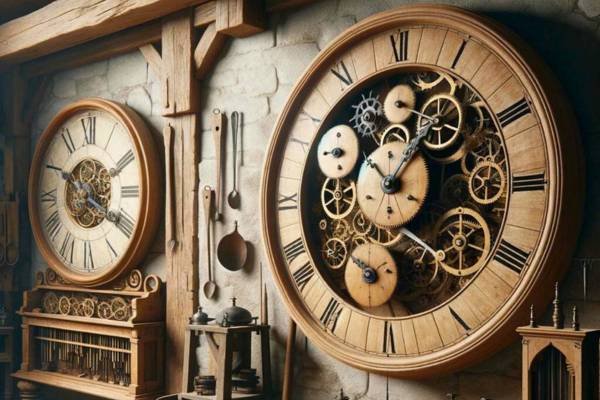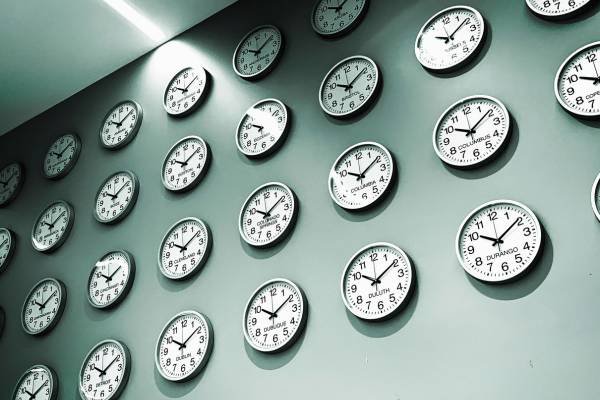“Who invented the wall clock?” is a question that piques the curiosity of history enthusiasts and everyday individuals alike. The journey of timekeeping, from ancient sundials to the modern wall clock, is a fascinating tale of innovation and craftsmanship. In this article, we delve into the origins of the wall clock, exploring the key inventors and their groundbreaking contributions. Discover how these ingenious creations have evolved over centuries to become an indispensable part of our daily lives. Join us as we unravel the mystery behind the invention of the wall clock and celebrate the remarkable advancements that have shaped our perception of time.
Guidance to Know: Who Invented the Wall Clock?
- Explore Early Timekeeping: Understand ancient devices like sundials and water watches.
- Study Medieval Innovations: Look into mechanical clocks developed in medieval Europe.
- Learn About Peter Henlein: Discover his role in creating early portable clocks.
- Identify Key Clockmakers: Research notable inventors and their contributions.
- Examine Modern Advancements: Review technological and design progress through the centuries.
Early Timekeeping Devices
Early timekeeping devices laid the foundation for modern clocks. Ancient civilizations used sundials, which relied on the sun’s position to cast shadows indicating time. Water watches, or clepsydra, measure time through the regulated flow of water from one container to another. These rudimentary methods marked significant advancements in the human ability to measure and track time. As societies advanced, so did the complexity of timekeeping devices. The evolution from sundials and water clocks to intricate mechanical watches in medieval Europe represents a monumental leap in precision and reliability, setting the stage for the invention of the wall clock.
The Advent of Mechanical Clocks
The advent of mechanical clocks marked a significant leap from rudimentary timekeeping methods to more precise instruments in medieval Europe. The transition began in the 13th century, with inventors like Richard of Wallingford and Giovanni de Dondi leading the way. Richard of Wallingford crafted the first astronomical clock, while Giovanni de Dondi designed the Astrarium, a complex watch that displayed planetary movements. These innovations laid the groundwork for the development of wall clocks, combining intricate mechanics with improved accuracy. The contributions of these pioneers were instrumental in transforming timekeeping into a more reliable and essential aspect of daily life, paving the way for the modern wall clock.
The First Wall Clocks

The first wall clocks revolutionized timekeeping by bringing precise, mechanical clocks into homes and public spaces. These early wall-mounted watches emerged in the 14th century, marking a significant advancement from earlier portable timepieces. Notable designs include those by Peter Henlein, a pioneering clockmaker from Nuremberg, who created some of the earliest spring-driven watches. His innovations laid the groundwork for more accurate and reliable timekeeping. Another significant figure is the Italian scientist Galileo Galilei, whose studies of pendulum motion greatly influenced wall clock mechanisms. These inventors and their groundbreaking designs played a crucial role in the evolution of wall clocks, making accurate timekeeping accessible to all.
Peter Henlein and the Portable Clock
Peter Henlein, a German locksmith, played a pivotal role in the early 16th century by miniaturizing clocks and creating the first portable timepieces. Known as the father of the modern watch, Henlein’s innovations marked a significant leap in horology, making timekeeping more accessible and precise. His portable watches, often referred to as “Nuremberg eggs,” laid the groundwork for subsequent advancements in wall clock design. By refining the mechanics and enhancing portability, Henlein’s creations directly influenced the development of more accurate and compact wall clocks, revolutionizing how people tracked and managed time. His legacy endures as a cornerstone in the history of clockmaking.
Advancements in Clockmaking
Advancements in clockmaking during the Renaissance and Enlightenment periods revolutionized timekeeping, leading to significant improvements in accuracy and popularity. Innovations such as the pendulum watch by Christiaan Huygens and the verge escapement mechanism enhanced precision, making watches more reliable. These technological breakthroughs allowed wall clocks to become a central feature in homes and public spaces. As craftsmanship and engineering techniques advanced, wall clocks evolved from simple timepieces to intricate works of art. The increased accuracy and decorative appeal of wall clocks during these eras cemented their place in society, marking a pivotal moment in the history of timekeeping.
Widespread Adoption of Wall Clocks
Several key factors drove the widespread adoption of wall clocks in homes and public spaces. Technological advancements in watchmaking have made wall clocks affordable and reliable, boosting their popularity. Cultural and societal changes, like the industrial revolution, created a need for precise timekeeping in daily life and workplaces. The introduction of standardized time zones highlighted the importance of accurate wall clocks. Additionally, the decorative value of wall clocks made them a fashionable home addition. These factors collectively transformed wall watches into a household staple, essential for managing time efficiently and enhancing interior decor.
Notable Wall Clock Makers
Notable wall clock makers have significantly shaped the timekeeping industry with their iconic designs and contributions. Figures like Peter Henlein, known for his early portable watches, and Thomas Tompion, the “Father of English Clockmaking,” revolutionized accuracy and aesthetics. Their innovations set new standards in clockmaking, influencing future generations. Other notable names include Gustav Becker and Franz Hermle, who introduced precision engineering and elegant craftsmanship. These watchmakers not only enhanced the functionality of wall clocks but also left a lasting legacy through timeless designs that continue to be celebrated today. Their contributions have cemented the wall clock as both a practical tool and a piece of art.
Modern Wall Clocks

Modern wall clocks have undergone significant evolution in the 20th and 21st centuries. The transition from mechanical to digital technology has revolutionized timekeeping. Contemporary wall watches now feature sleek designs, enhanced accuracy, and multifunctional capabilities. Trends in modern wall clocks include minimalist aesthetics, smart technology integration, and sustainable materials. Designers focus on creating watches that are not just functional but also stylish home décor pieces. The advancement in technology has enabled features like automatic time adjustments, silent movements, and connectivity with smart home systems. These innovations ensure that wall clocks remain relevant and indispensable in today’s fast-paced, technology-driven world.
5 FAQs for Who Invented the Wall Clock?
1. Who invented the wall clock?
✅Peter Henlein is often credited with early portable watches, influencing wall clock design.
2. What timekeeping methods existed before wall clocks?
✅Sundials, water watches, and hourglasses were used before wall clocks.
3. How did wall clocks develop from mechanical watches?
✅Advancements in gears and escapements improved accuracy, leading to wall-mounted versions.
4. What key technological advancements have impacted wall clocks?
✅The pendulum watch, spring-driven mechanisms, and quartz technology significantly advanced wall clocks.
5. Why did wall clocks become popular?
✅Their accuracy, readability, and role in daily coordination made them popular in homes and public spaces.
Conclusion
In conclusion, “Who invented the wall clock?” is a question that takes us on a fascinating journey through time. From ancient sundials to modern digital wall clocks, the evolution of timekeeping devices showcases human ingenuity and technological advancement. Key inventors and watchmakers have played pivotal roles in shaping the wall clocks we use today, blending precision with aesthetic appeal. As wall watches continue to evolve, integrating smart features and contemporary designs, their significance in our daily lives remains unwavering. The legacy of the wall clock is a testament to our enduring quest to master and measure time, ensuring its place in both history and the future.
